Having large workout equipment in our home isn’t ideal for most, but you really don’t need the big equipment- like Reformers & Cadillacs in order to get a good workout! Don’t get me wrong, they are fun to use, but using small props and your bodyweight can be just as effective!
You can of course get an effective workout using bodyweight alone, but what happens when you want to take your workout up a notch? Adding props is the way to progress to the next level.
They can be used to challenge your endurance, strength, and stability. Props are also fantastic for making exercises more accessible to different body types and injuries by providing more support. They can also help you connect more and target specific muscle groups by providing tactile feedback.
Or maybe you just want to spice up your workouts and add more variety. Props can help with that too! The options are truly endless, and you will never be bored in your workouts!
But how do you decide on what to actually buy? That can depend on what your goals are.
Below you will find a list of the equipment that I recommend incorporating into your workouts.
This post contains links to Amazon or other affiliate products. If you click through and make a purchase, I may earn a small commission at no extra cost to you.
1. Mat
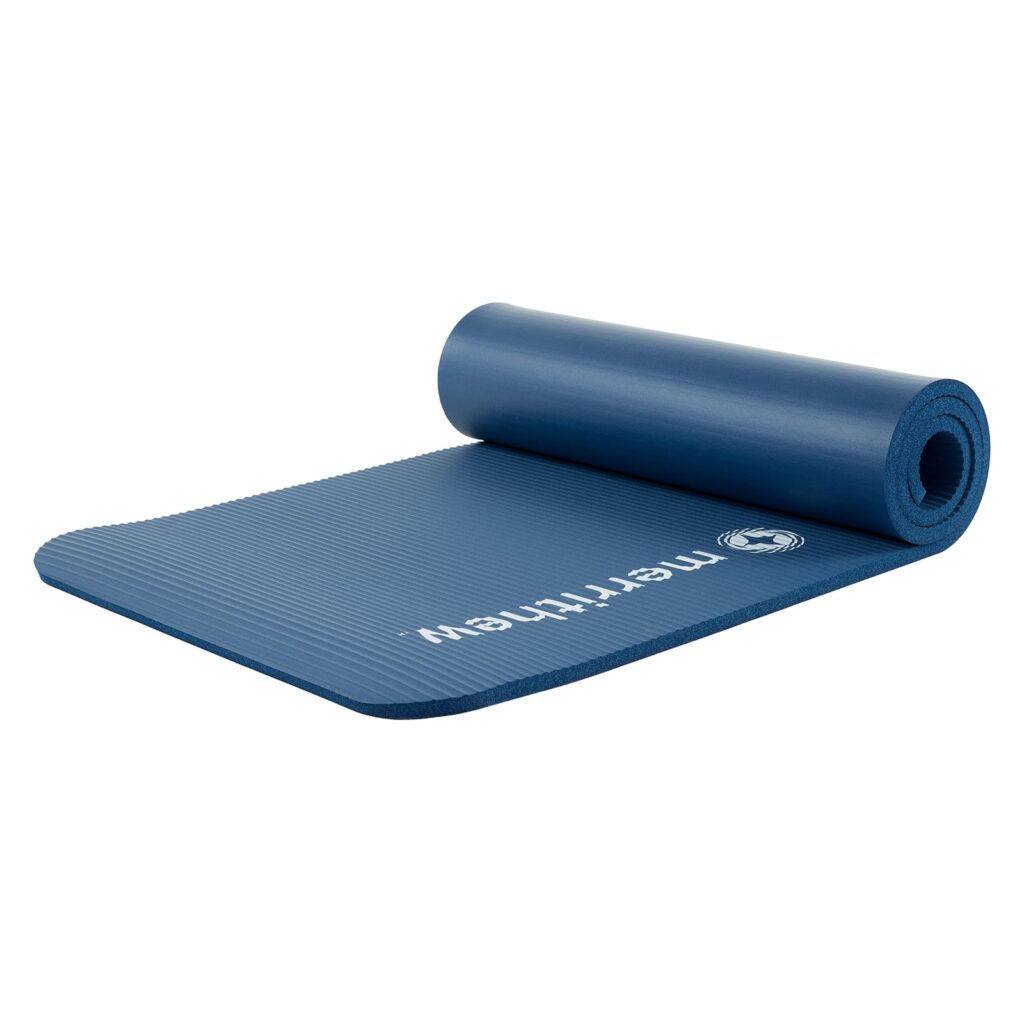
It goes without saying, but you want to make sure you have a nice mat to support your body and protect you from the hard floor. I hear all the time from people that they are so uncomfortable doing certain exercises on their current mats, so they always ask for my recommendation.
Mats come in a variety of thicknesses. I personally prefer a thicker mat for Pilates, and I find my clients do as well. You want to make sure it is supportive and cushioned enough so that the ground doesn’t hurt your knees when you are kneeling or your spine during abdominal work. If you were to do the Rolling like a ball exercise for example, you don’t want your spine to hit the hard floor!
I recommend the Merrithew Deluxe Pilates Mat. It is on the more expensive side, but is definitely worth it! They are great quality and you will not regret your purchase!
2. Resistance Bands- long band and mini band
I love resistance bands! They are extremely versatile and are a must have for everyone! They can be used to support the body and make exercises more accessible to someone, and they can also be used to intensify an exercise and take your workout to the next level. You get the best of both worlds! The best part is that they aren’t expensive at all! Plus, they are small, so you can store them anywhere and can easily throw them in your suitcase if you are traveling.
When picking out a resistance band, you want to make sure it is long because it gives you more variety for exercises and you won’t be limited by the band being too tight. For example, if you were to stand on the band with both feet, you want to be able to bring both arms at least to shoulder height and ideally overhead.
I recommend the STOTT Pilates Flex-Band. It is 78 inches long, so you have plenty of room to adjust your tension.
It comes in a Latex Version and a Latex Free version.
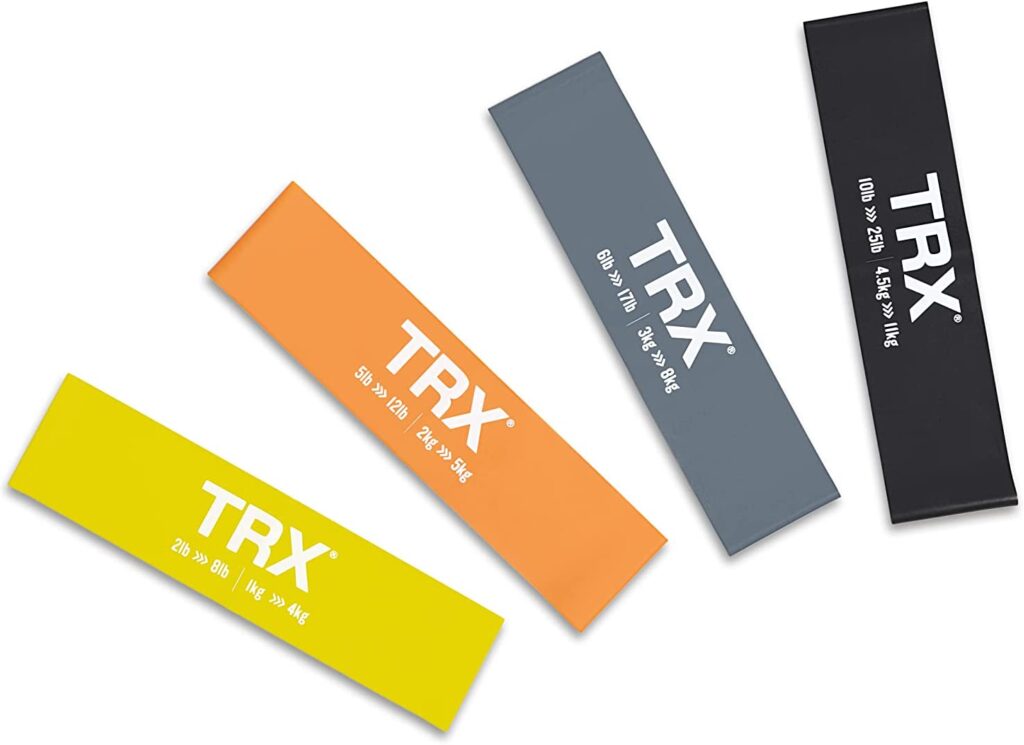
Now if you have a long band, you can also tie it into a loop to make a ‘mini-band’ also called a ‘booty-band’. I find a lot of clients would rather just purchase a separate band instead of always having to tie and untie a knot. I totally agree with them. It saves time in the workout as well as keeps your band in better condition because you are less likely to rip it.
I recommend the following set of TRX mini-bands. You get 4 different strengths, which provides a lot of options for resistance because they can be used for both arm and leg work.
3. Mini Ball
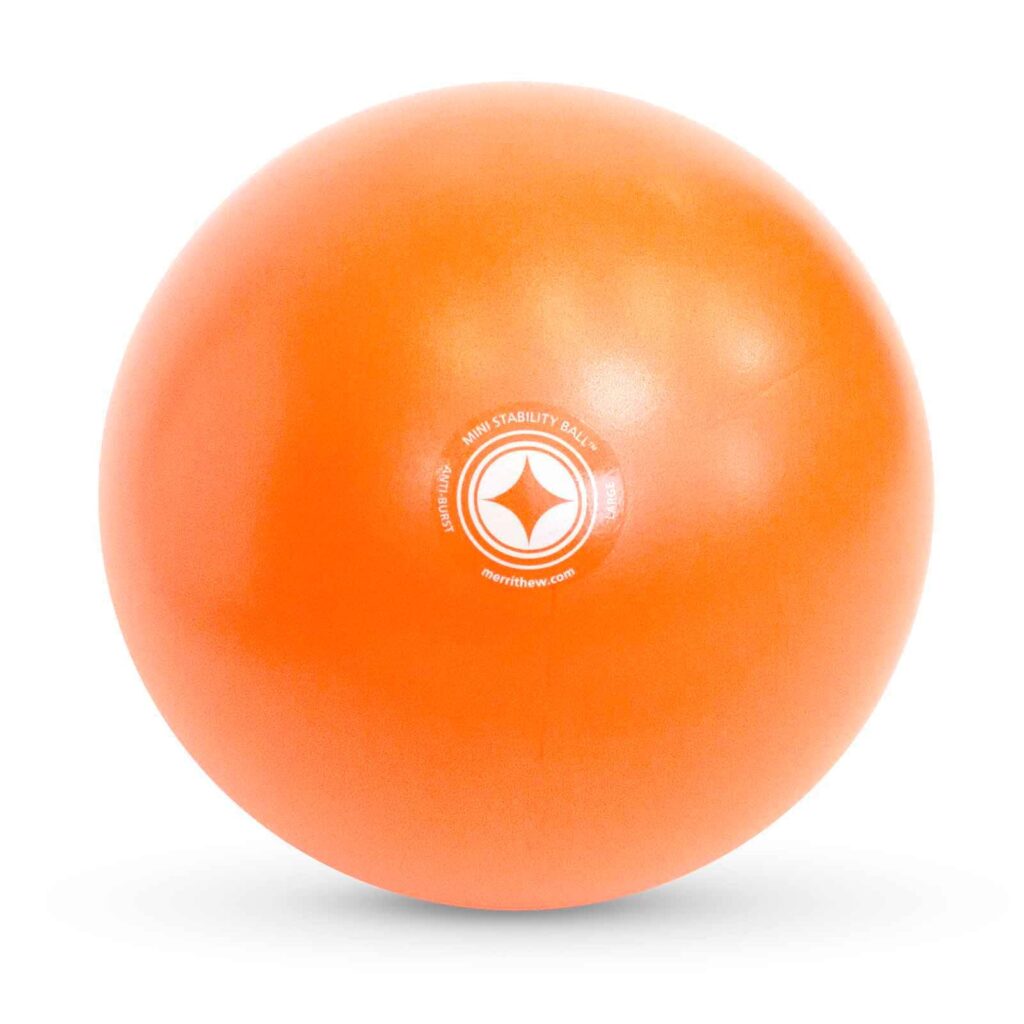
What’s not to love about the mini-ball?!? Definitely a favorite of mine! The Mini-ball is a soft, inflatable ball that can be used blown up fully or partially deflated.
It is worth buying just for the exercise of putting it behind your mid back, leaning against it, and extending back for an amazing stretch. But really, it is great to both challenge & support the entire body! One of the many ways you can use the ball is between the ankles or knees to help activate the inner thighs or simply to provide feedback for alignment. It is also great for challenging stability and building core strength when used behind the back or under the hips. Not only is it extremely useful for your Pilates practice, but it is small and easy to store, making it perfect for using at home. Mini- balls range from 9-12 inches.
I recommend the following Merrithew Mini Stability Ball. It comes in several sizes and each size offers its own benefits. Now because I am a Pilates Instructor, I of course have all of them- but if you only want to purchase one, I recommend the Orange 12 inch ball because it will provide the most support and is the most versatile.
4. Sliders/Towels
They may look like giant furniture sliders, but don’t underestimate what a simple towel or set of sliders can do to challenge your strength! Many exercises from the reformer can easily be recreated using the gliding action of a slider.
If you have tile or wood floors, you can easily use a towel. But if your floors aren’t slippery enough, I highly recommend purchasing a set of sliders because they will make the exercises much easier to perform when they can smoothly glide across the floor. Sliders are dual sided and can function on carpet and hardwood floors so they can be used on any surface.
I recommend the Merrithew Sliders and the Live Infinitely sliders.
5. Hand Weights & Wrist Weights
Weights are a staple for every at-home workout kit. Adding weights is an effective way to increase difficulty and build strength. I recommend having weights ranging from 1-5 pounds. As you continue to workout, the goal is to of course progress your strength so your collection of weights will likely grow, but that’s a good thing! It opens up a lot of options because some exercises are much harder than others. For example, you may be able to easily hold 5 pound weights while doing arm work lying on your back, but if you were to sit and need to hold the arms up at shoulder height you may only be able to use 2 pounds.
You can purchase dumbbells, or weighted toning balls. Some prefer holding weighted toning balls because it is more comfortable on their hands. The only downside is that weighted toning balls only range from 1-3 pounds, so you are limited in your options for weight.
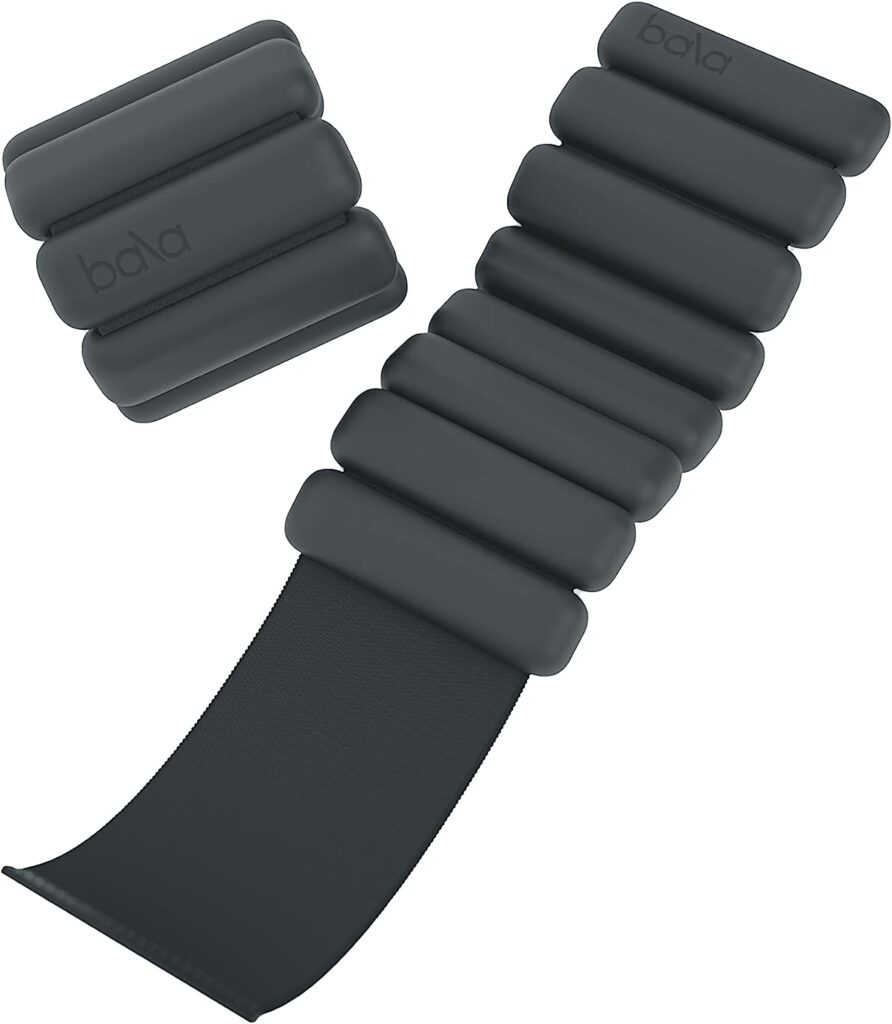
For those who have bad arthritis in their hands, holding weights isn’t always ideal, but that doesn’t mean you can’t intensify arm work- enter wrist weights. These are a fantastic option and can also be used on the ankles to intensify lower body work.
I highly recommend Bala weights. They come in either 1 or 2 pound options. They are sturdy, easy to clean, and as a bonus come in pretty colors. They are well worth the price!
6. Yoga Blocks
Blocks are well known in yoga for making certain poses more accessible to people. One example of this is that they can be used under the hands, in a sense bringing the floor closer to you if you are lacking hamstring flexibility.
In Pilates, blocks offer both support and feedback to maintain alignment. There are so many ways to use them, and since they are small and inexpensive, they are a must for everyone’s workout kit.
One of the main ways you will see blocks used is between the thighs for feedback to maintain parallel alignment during bridges or any seated work. Using a block can also help with any gripping you may experience in the hip flexors. Sitting flat on the floor isn’t comfortable for most people. Using a block under the hips while seated is a great way to help maintain neutral alignment of the hips and spine. You can also challenge your balance by standing on a block and doing squats and lunges, etc.
Blocks come in two sizes- 4 inch and 3 inch. I recommend the 4 inch block because it offers more support when used to support the head in sidelying. It is also easier for people to squeeze between the knees.
I recommend getting the Gaiam set of 2 Blocks.
Hugger Mugger is also a fantastic brand, but is more expensive.
7. Roller
Most people think of the foam roller only as a tool to roll out their tight muscles and fascia, but it is also a fantastic addition to your Pilates workouts. The unstable surface will challenge your balance and your proprioception. For example, you can lay on the roller with it vertical on the mat so that it supports your head all the way to your tailbone and perform arm work holding weights, or you can perform toe taps, etc. You can also turn the roller horizontally and place it under the pelvis.
It is important to know that foam rollers come in a variety of densities. Because you want to be able to lay with your spine on the roller without pain, you want to purchase either a medium or soft density. They also come in different lengths. Make sure to purchase a 36 inch roller so that you have plenty of room to lay on it.
My go-to roller is the OPTP soft foam roller.
8. Big Stability Ball
The big stability ball is a staple for Pilates workouts. The instability of the ball is best known for challenging the core and stabilizer muscles, but it does so much more than that! For example, you can do planks with your forearms on the ball which also challenges the upper body. You can also target your lower body more by doing bridges and footwork with your feet on the ball.
The ball is extremely versatile and is truly great for all levels, which is why I recommend all of my virtual clients get one.
I have several clients who I train virtually that find getting to the floor isn’t ideal, so we do a lot of seated and standing work. Even just sitting on the ball and doing arm work, in comparison to sitting in a normal chair is a great way to challenge stability and improve balance and is something that I do often with them. Just that small change makes a huge difference!
The only downside is that the big stability ball is not as easy to store as some of the other props that I have listed, but it is an extremely valuable piece of equipment to have if you have room for it.
They come in a variety of sizes ranging from 55-75cm. A good guide is when you are sitting on the ball, you want to be around 90 degrees at the hip joint. If your ball is too small and your hips sink lower than your knees, most exercises will be uncomfortable for you.
I recommend the Merrithew Stability Balls & Probody Pilates Ball.
If you are 5’2 or shorter I recommend a 55cm ball
If you are around 5’3-5’7 – I recommend at 65cm ball
If you are 5’8 or taller I recommend a 75cm ball
9. Bosu
Bosu stands for ‘both sides up’ because it can be used with the flat base on the floor, or flipped over with the dome side on the floor. The Bosu is basically half of a big stability ball, and because one side is flat, it offers a lot of exercise variety and opens up a whole new world of standing on it to challenge balance in new ways.
Balance and stability challenge is what the Bosu is known for, but it can be used for so much more than just standing on it. What I love most is how in addition to making exercises more challenging, it can make a lot of exercises more accessible for people, especially those with low back tension, stiff upper back, and problems kneeling.
Take your Breast Stroke Prep exercise as an example. It is typically done lying flat on your stomach on the mat with the hands up by the shoulders and you work on your upper back extension. For many people lying flat is not comfortable on their lower back. With the Bosu, you can lay over it with your belly button about at the top of the dome. This position allows the lower back to lengthen more compared to when you are on the mat, which helps alleviate any gripping in the lower back. Because this position allows the upper body to start rounded over the Bosu, it also offers more range of motion for the upper back to move into extension to strengthen the often weak muscles in the upper back. If you are limited in your upper back mobility and you lay flat on the mat and try to extend, either barely any movement will happen or you may feel tension in the lower back from it trying to help out. The Bosu is a fantastic fix for this because even if you can only lift up to neutral, you are still building strength in your upper back.
While the Bosu is on the more expensive side, its versatility makes it worth it!
10. Stability Cushions
Stability cushions aren’t as well-known as some of the other props I have listed, but they are my favorite prop to use in my personal workouts. They are perfect for increasing challenge and endurance while also working on improving stability and balance. They are extremely versatile in that you can lay on them, kneel, stand, and sit on them. They will have you feeling your core in an entirely new way!
I recommend getting a set of the Merrithew green Stability Cushions.
11. Fitness Circle
You may also have heard it called the magic circle, Pilates ring or clients will typically call it ‘ring of fire’ or ‘circle of death’ because it is known for challenging people’s inner thighs. But that is only one of the many ways that it can be used. It is primarily used to provide resistance to your workouts, but it can also be used to improve flexibility and provide support.
One of my favorite uses of the circle is to assist with push-ups. It has been a game-changer both for me and my clients. You can put one handle of the circle along your sternum, and the other handle on the mat. As you bend your arms for the push-up you are given more support the more you bend the arms, help you gain more range and strength.
I recommend the STOTT Pilates Fitness Circle Lite.
I know there are so many options to choose from, and I didn’t even include all of the options for small equipment on this list because there are so many fun toys to play with in Pilates. If you have questions on what would be good for you to add to your workouts, don’t hesitate to ask. My clients typically start with a resistance band, hand weights, blocks, and a mini-ball. If they have room in their house, they also have the big stability ball. Their collection often grows over time to keep adding variety into their workouts.
Are you ready to discover all of the amazing benefits of Pilates?
Get Started with the Introductory Special or join one of my small Virtual Pilates Group Classes!
Welcome Friends
HELLo, I’m Alyssa
Movement is my life! My biggest passion is understanding the human body and I want to share it with you! Coming from a ballet background, I'm no stranger to injuries and the struggles of rehab, but I wouldn't change a thing because they led me to find Pilates and inspired me to do what I'm doing today.
I'm here to help you feel stronger, move better, recover from and reduce your risk of injuries, & exceed your performance goals.
If you love movement, anatomy and you want to laugh & enjoy your workouts, you're in the right place!
Signature program
Heal Your Hips
This is my 9 week program that will rebuild your hip health from inside out. The results speak for themselves - if you're experiencing hip discomfort, this is where to begin.
BEST THE Blog
of
In this post, I break down why a holistic, full-body approach is the key to lasting hip health—and how to start improving your mobility, strength, and comfort today!
Have you ever felt like you were doing an exercise perfectly, but your instructor keeps giving you the same correction? And you get frustrated because in your mind you’re not doing anything wrong? You’re not alone! This happened to me all the time in dance class. My ballet teacher always told me to straighten my […]

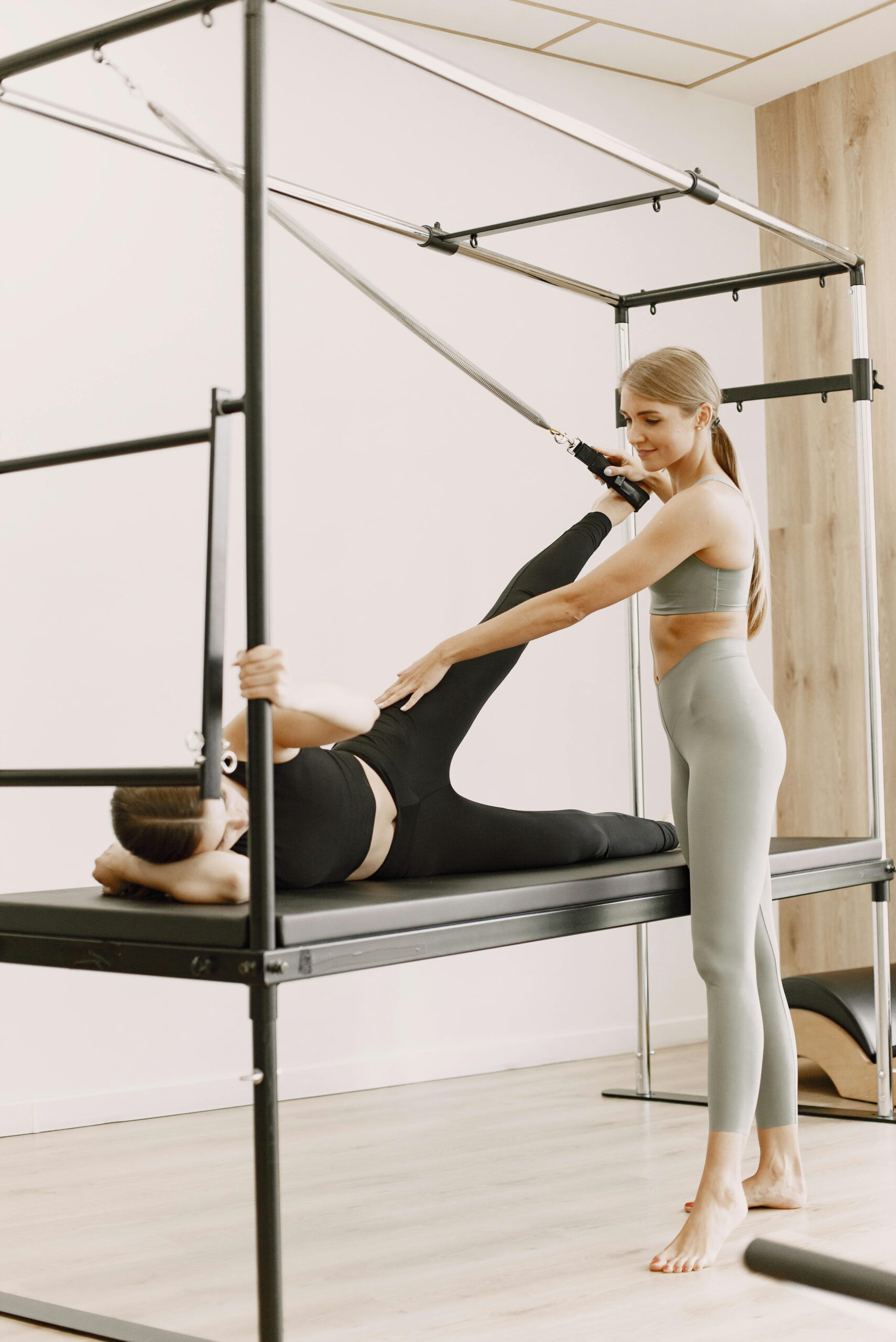
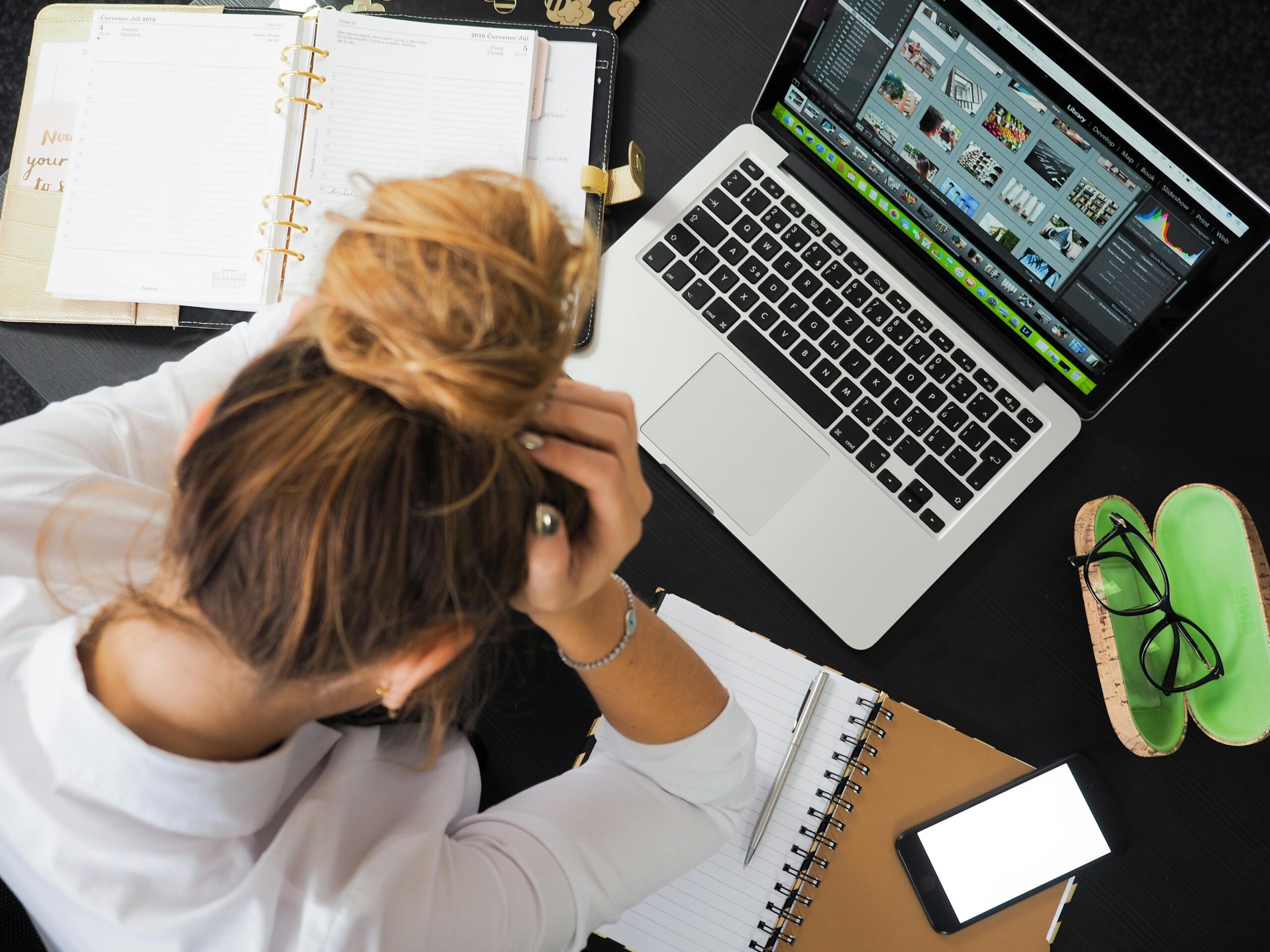
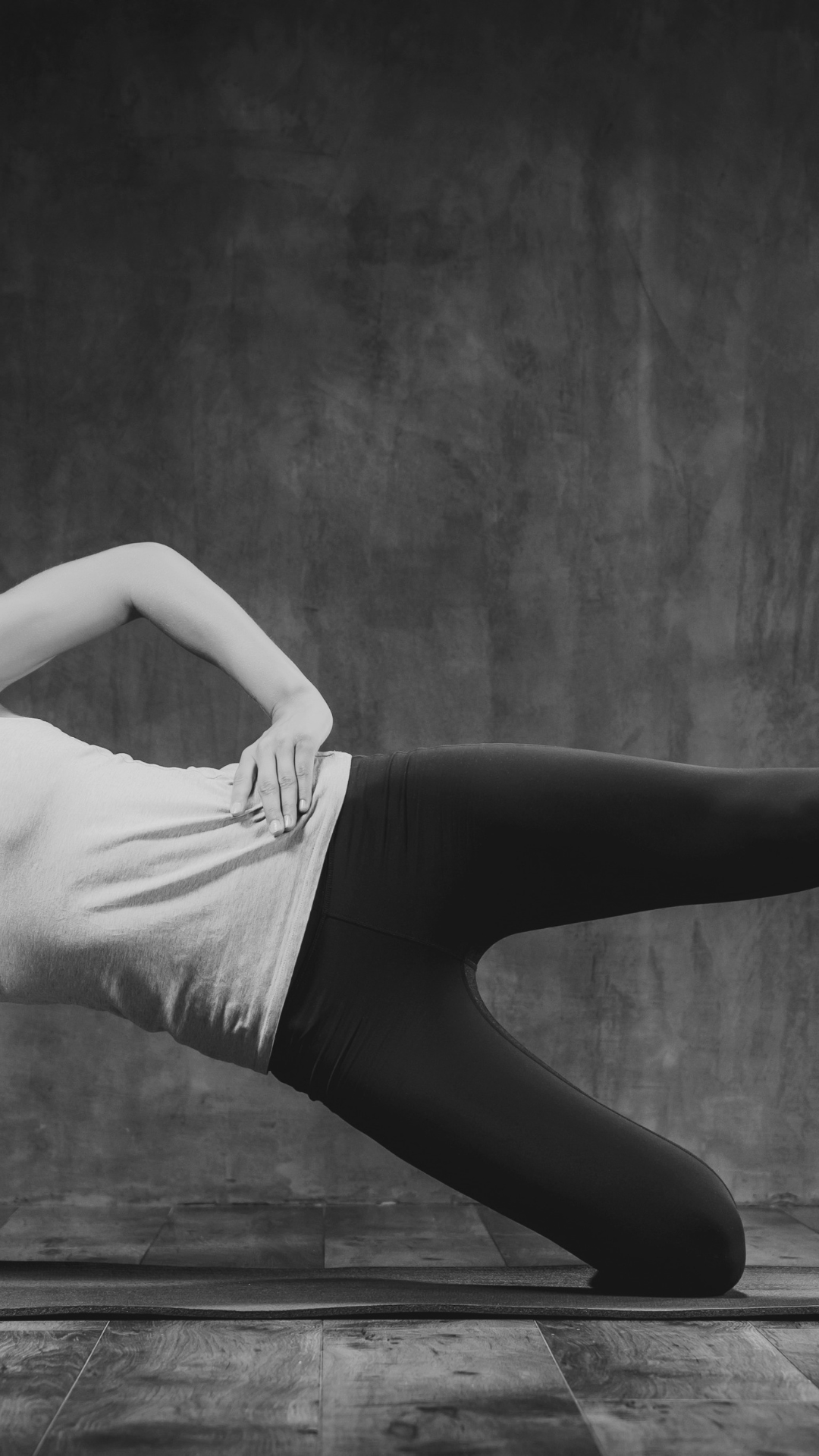


+ Show / Hide Comments
Share to: